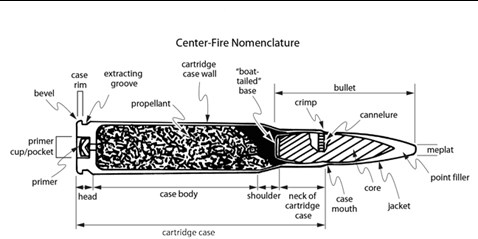Our Reloading Primers Statements
Table of ContentsOur Primers In Stock PDFsAll About Pistol PrimersThe Greatest Guide To Primers In StockRifle Primers Can Be Fun For AnyoneGetting The Federal Primers To Work
Component of the gun cartridge for launching propellant burning In firearms as well as weapons, the primer () is the chemical and/or device responsible for starting the propellant burning that will push the projectiles out of the gun barrel. In early black powder weapons such as muzzleloaders, the guide was essentially the very same chemical as the main propellant (albeit generally in a finer-powdered kind), yet poured into an outside flash pan, where it could be fired up by an ignition source such as a slow match or a flintlock Some muzzleloaders have guides like cap weapon caps.
In weapons the guides are often a different part, positioned inside the barrel to the back of the primary propellant chargebut there are various other instances of guns, including for example some automated tools, developed to fire cartridges with indispensable electric guides.
An Unbiased View of Rifle Primers

This opening was filled with carefully ground powder, which was after that sparked with a warm ember or torch. With the introduction of hand-held firearms, this ended up being an unfavorable method of shooting a weapon. Holding a burning stick while trying to pour a cost of black powder meticulously down a barrel threatens, as well as trying to hold the weapon with one hand while simultaneously targeting at the target and looking for the touchhole makes it really hard to fire precisely. [] The very first effort to make the process of firing a small arm easier was the "matchlock".
, and also dried. After the weapon was loaded and the touchhole primed with powder, the burning idea of the suit was placed so that the lock would certainly bring it into contact with the touchhole.
The Federal Primers Statements
This brought the match down to the touchhole, igniting the powder. With cautious interest, the slow-burning suit might be maintained burning for long durations of time, and making use of the lock device made fairly accurate fire possible. The following revolution in ignition technology was the "wheel-lock". It utilized a spring-loaded, serrated wheel which scrubed against an item of iron pyrite, comparable to a contemporary lighter.

The covered flashpan additionally gave some capacity to hold up against negative climate. The wheel-lock enjoyed only a short duration of appeal before being superseded by a less complex, extra robust style.
About Winchester Primers
The flint was held in a spring-loaded arm, called the "cock" from the similarity of its movement to a pecking hen. The dick rotated through roughly a 90-degree arc and also was held in the tensioned, or "cocked" placement by a trigger.
The "half-cock" placement held the dick halfway back, and also made use of a deep notch to make sure that shooting would not launch the cock. Half-cock was a security position, used when packing, keeping or bring a packed flintlock. The "full-cock" placement held the cock right back and was the position from which the weapon was terminated.
It acted as both a flashpan cover as well as a steel striking surface area for the flint. The frizzen was pivoted as well as spring-loaded to ensure that it would secure the open or shut placement. When shut, the striking surface was positioned to make sure that the flint would certainly strike at the appropriate angle to produce a stimulate.
The 7-Minute Rule for Cci Primers
The flintlock mechanism was easier and also more powerful than the wheel-lock, as well as the flint as well as steel offered a great, trusted resource of ignition. The flintlock continued to be in military service for over 200 years, and also flintlocks are still made today for historical re-enactments as well as muzzle-loading target competitors, and for seekers who appreciate the added obstacle that the flintlock gives.
Percussion ignition was developed by Scottish clergyman Rev. Alexander John Forsyth in 1807 however required better refinements before it was slowly accepted in the 1820s to 1830s. By the middle over at this website of the 19th century, the percussion or caplock system was well established. It was adopted by both sides in the American Civil Battle, as it was easier and also much more trustworthy than the flintlock.
The flashpan as well as frizzen were eliminated as well as changed by a little, hollow straight cyndrical tube (drum) screwed right into the bored-out as well as touched flash hole as well as carrying a "nipple area" over which the cap can be fitted. A "hammer" which also had half-cock (for packing and also applying the cap) and full-cock settings replaced the cock.